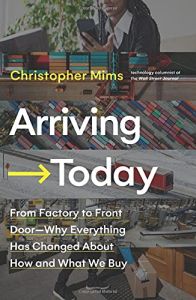Join getAbstract to access the summary!

Join getAbstract to access the summary!
Christopher Mims
Arriving Today
From Factory to Front Door – Why Everything Has Changed About How and What We Buy
HarperBusiness, 2021
What's inside?
How the global supply chain works, how it can break down, how it will function in the future – and why Amazon will dominate.
Recommendation
Wall Street Journal writer Christopher Mims offers a timely look at how the vast and complex supply chain functions. Mims traces the journey of a hypothetical USB charger from a Vietnamese factory to an American customer’s doorstep, describing transportation infrastructure, workers, automation and management philosophies that make fast delivery possible. He also explains how the COVID-19 pandemic boosted Amazon’s dominance of e-commerce and its influence on shaping the supply chain of the future.
Summary
About the Author
Christopher Mims writes the “Keywords” technology column for The Wall Street Journal. He has written for Quartz, MIT Technology Review, Smithsonian, Wired, The Atlantic and Scientific American.

















Comment on this summary